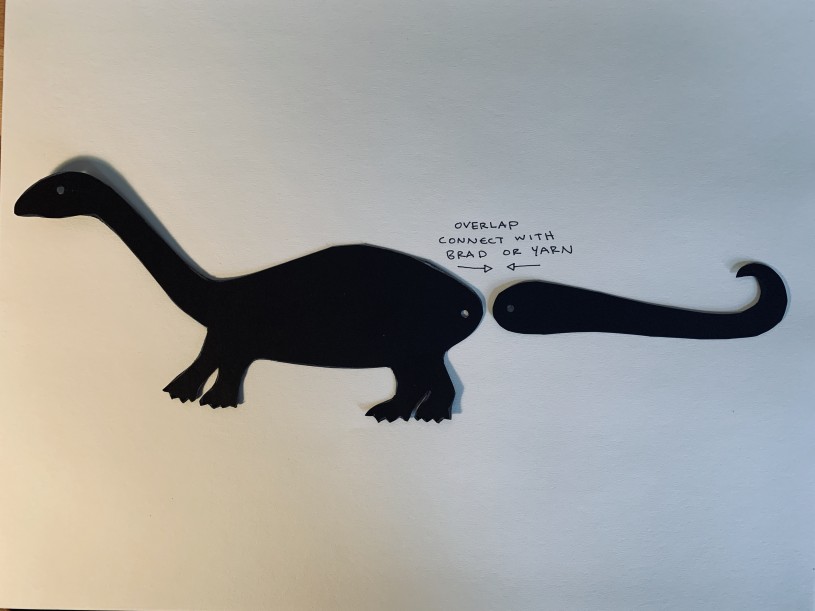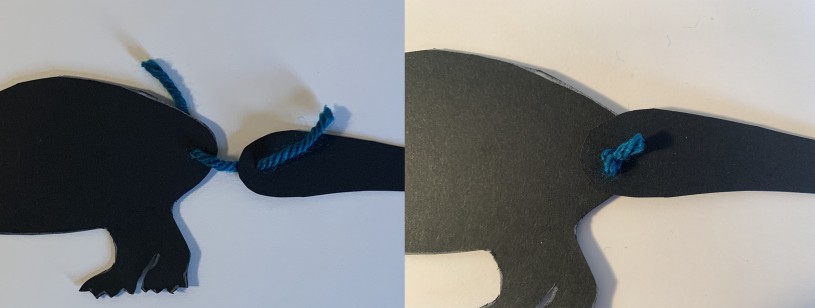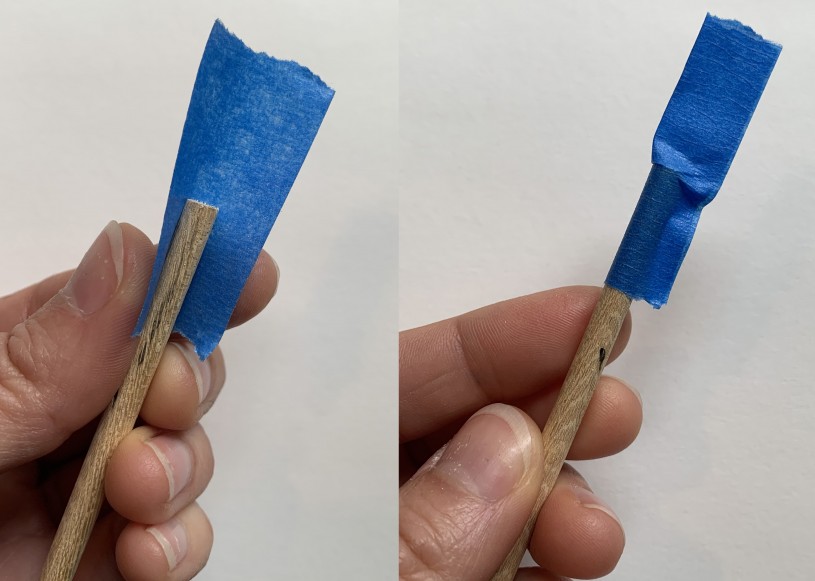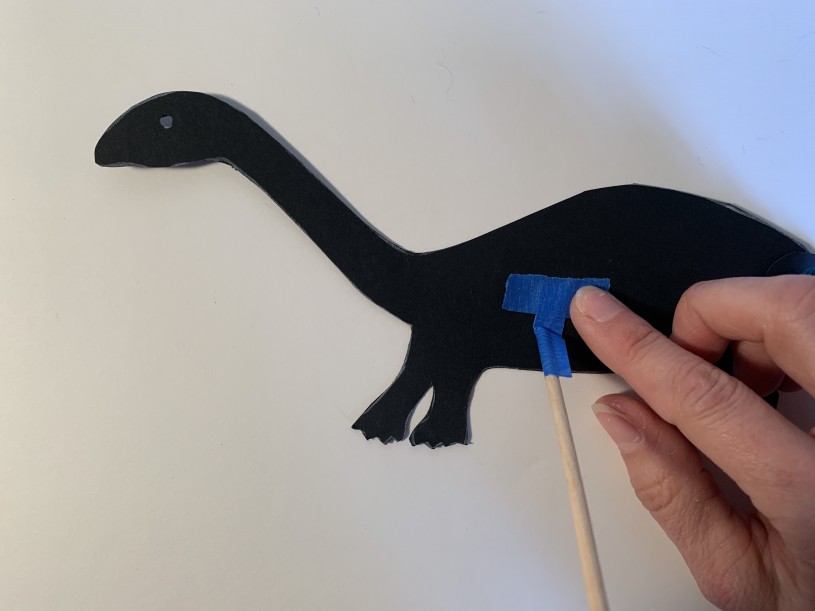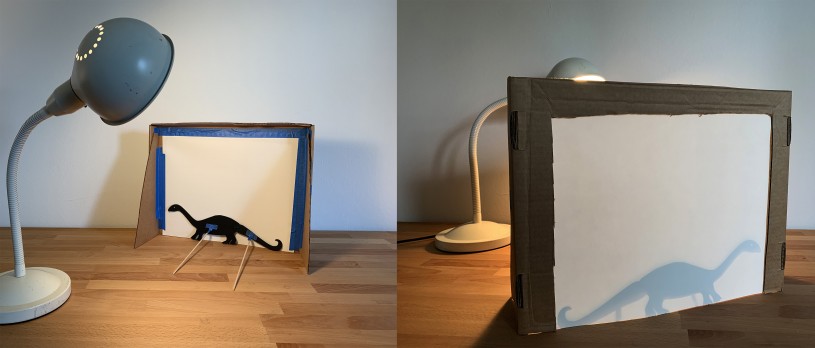Make Your Own Dinosaur Shadow Puppet and Screen
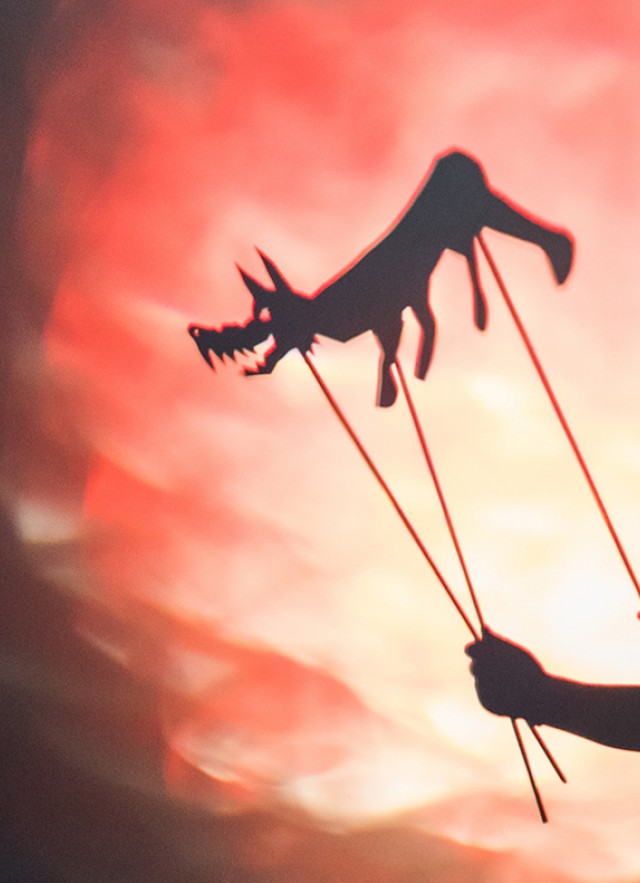
suggested for elementary school (with parent help), middle school and high school students
In this activity, you can learn how to make your own shadow puppet, and put on a show with a variety of dinosaurs. Puppets can be altered for different age groups and abilities (add more joints to create a more challenging build).
Materials
Puppets
-
Black cardstock (or any opaque thin cardboard, like a cereal box or milk carton)
-
White colored pencil or crayon (if using black cardstock)
-
Pencil or marker
-
3/16” dowels (or cut the sharp ends off BBQ skewers, or use sticks!)
-
⅛” brads (or twine/yarn with the ends knotted on either side)
-
⅛” Hole punch (or poke a smaller hole and use string or yarn to join)
-
Tape
-
Scissors
Screen
For a tabletop setup:
- Cardboard or foam core (also try using a box.)
- White butcher paper or parchment paper (or use 8.5x11 paper to make a small screen)
- Table lamp
For a larger setup:
- White sheet or shower curtain liner
- Something to drape curtain over (i.e. curtain rod in doorway)
- Standing lamp
instructions
1. Make a pattern
Puppets can have joints, or not. If you make a jointed puppet, consider where the joints will need to go for the most effective illustration of your movement. Joints on limbs should overlap the body of the puppet.
Options for making a pattern:
- Create your own by sketching a character directly onto cardstock and cutting out the parts. Assemble with brads and dowels.
- Print an image, cut it out and trace it onto card stock, creating limbs and moving parts if you wish. Assemble with brads and dowels and perform!
- Print dinosaur puppet templates below, trace onto cardstock if available for a more durable puppet, cut out and assemble with brads or string and dowels.
2. Cut out and assemble your pattern
Punch holes where the limbs/moving parts should attach and insert brads or tie with yarn. Tape dowels to sections of the puppet you want to control. Fold a piece of tape over the end of the dowel/skewer so that the tape is half on the dowel and half off. Then tape the flexible folded tape to your puppet. Use two dowels, one for each hand and experiment with which limbs you want to control. Hint: some limbs work well on their own using the tabletop to create movement. For this sauropod puppet we put one dowel on the body, and one on the tail. Where could you add more joints? Maybe the neck, or legs?
Place the puppet flat against your screen and control the limbs using a twisting motion.
3. Make some scenery elements
Cut out shapes from cardstock or cardboard, or use existing items such as artificial plants. Try other objects out! Lots of things at home can make interesting shadows to set your scene.
4. Make your shadow screen
For a tabletop setup, cut a rectangle out of the center of a large piece of cardboard or foam core (should resemble a frame). Tape white butcher paper to one side of the frame, covering the entire opening. Cut two large triangles out of cardboard or foam core and glue or tape these to the back of your frame to make it stand up. Alternately, cut a rectangle out of a box lid, or shallow box (Be sure to cut at least ½” inside the edges) and tape paper over the opening. Position a table lamp behind and above the puppeteer. Try putting your puppet in front of a lamp aimed at a wall- No screen required!
5. Set up your screen, light your lamp, and perform!
Write a script! Improvise movements! Explore how the shadows change size and move through the space.
Example Scene
- Characters: scientist, artist, fossils, and dinosaur (ex. sauropodomorph)
- Scenery: fossil dig site (plants, rocks, crates); lab (shelves of fossils, skeletons, tools)
- Story: Paleontologist excavates fossils from ground. In the lab, scientists clean fossils and technicians assemble bones. Artists work with scientists to create models of extinct creatures. That model is a creature that can come alive through puppetry!
Tips:
- Use facts and imagination to perform the movements of extinct animals (see below for fact sheet and pattern for a sauropodomorph!)
- Puppets can interact with each other and their environment.
- Think about how your animal might have moved and try to copy that in your shadow puppet movements
Oculudentavis
The smallest dinosaur discovered yet! Check out the story on NHMLAC Connects.
Draw your own dinosaur or print and cut out the templates below.
What other puppets could you create?
